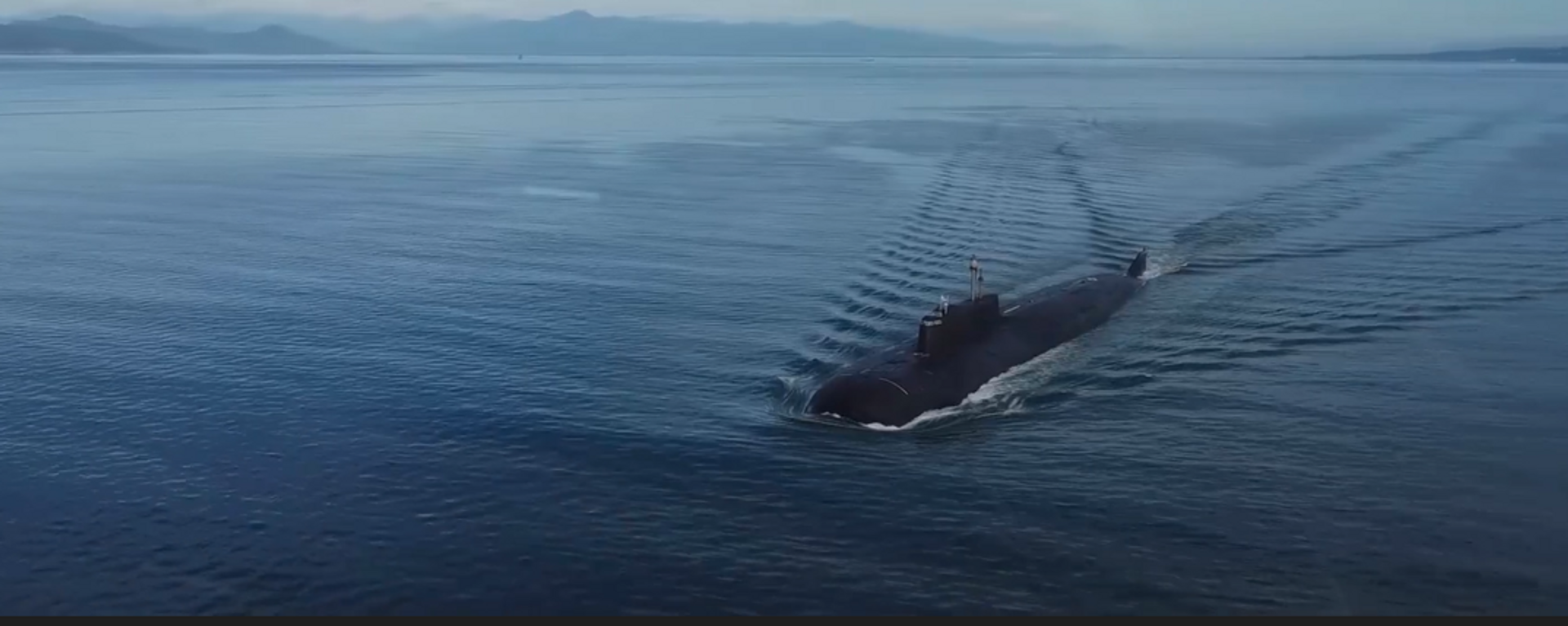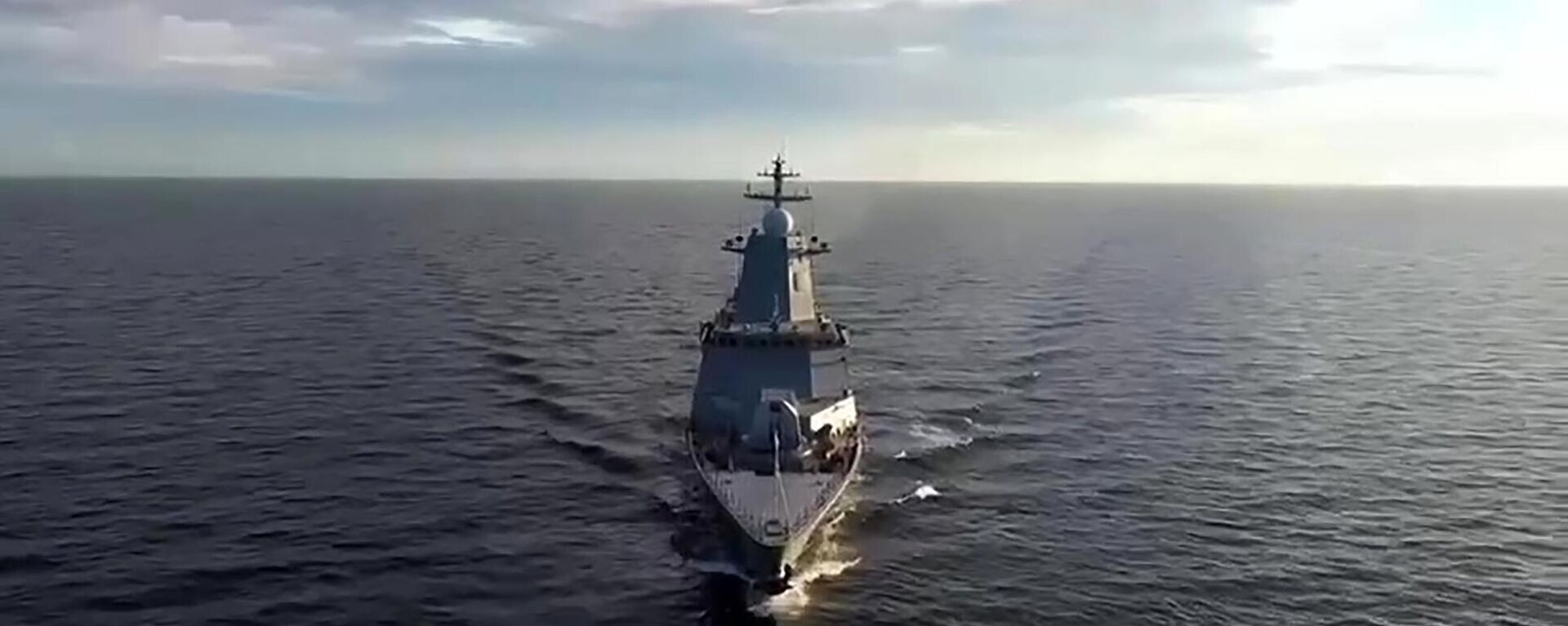Russian Pacific Fleet: Three Centuries Keeping Window to the East Open
17:00 GMT 21.05.2023 (Updated: 17:28 GMT 21.05.2023)
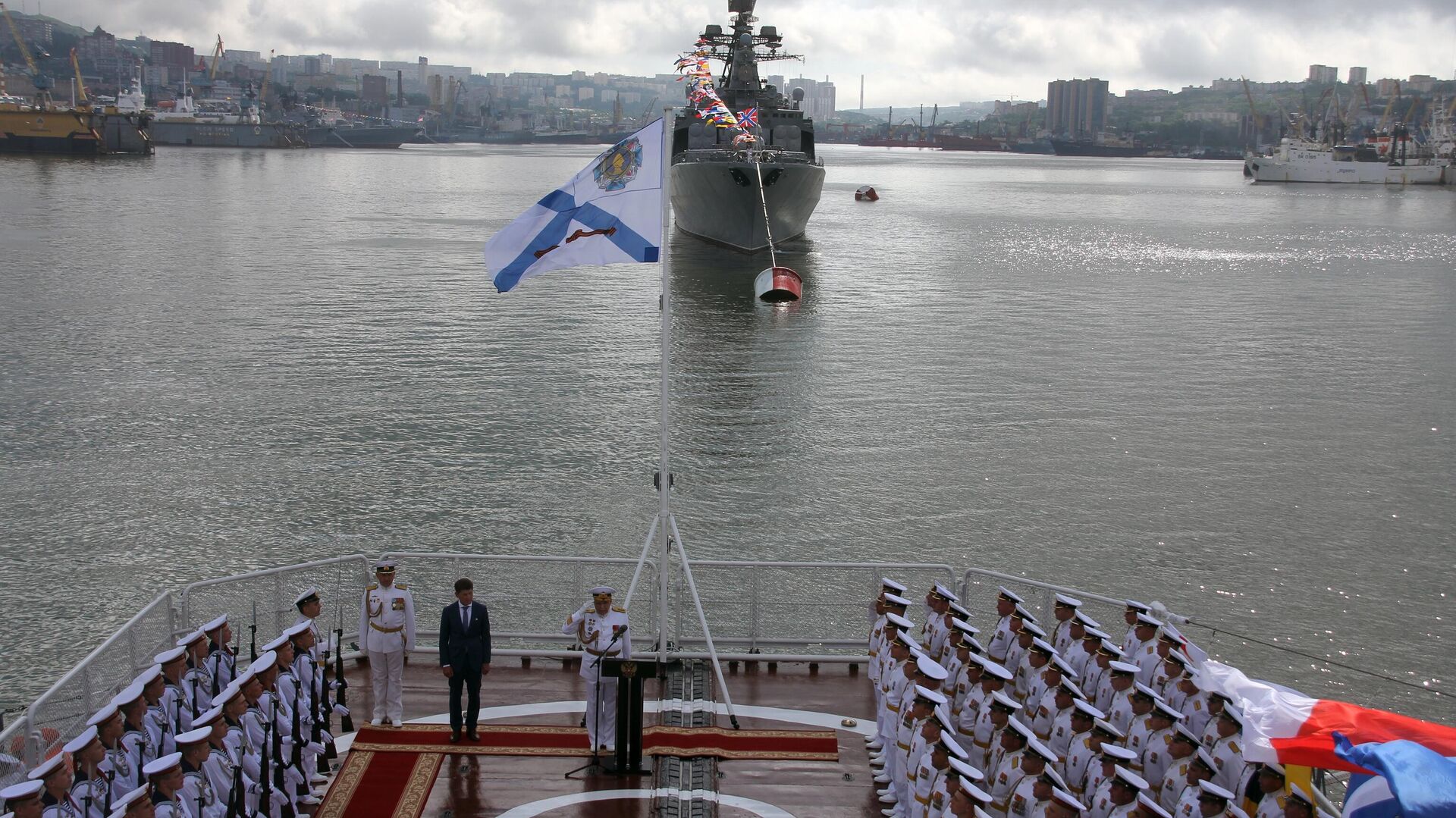
© Sputnik / Ильдус Гилязутдинов
/ Subscribe
May 21 is the 292nd anniversary of the creation of the Okhotsk Flotilla – the spiritual precursor to the Russian Pacific Fleet. Nearly three centuries on, the naval force’s mission remains true to that of its origins – guarding Russia’s far eastern frontiers and providing the nation with access to the warm waters of the Pacific Ocean.
292 years ago today, on May 21, 1731, Empress Anna Ioannovna issued a decree on the creation of a new naval force in Russia’s far eastern territories. The flotilla, headquartered in the Khabarovsk Krai settlement of Okhotsk, was tasked with guarding the coasts and islands of the Russian Empire’s Far Eastern possessions.
A small shipyard was created in Okhotsk to build vessels for the transport of goods and people between Okhotsk and Kamchatka, with the Russian state and local industrialists building and chartering commercial, scientific and military vessels to chart local waters, explore south toward Japan, and east toward the shores of Alaska and California, where Russian settlers would soon establish multiple colonies. In 1799, Pavel I of Russia announced the creation of a regular naval force to protect Russian possessions in the region.
Over the next 150 years, the flotilla’s headquarters would be moved repeatedly, transferring to Petropavlovsk-Kamchatsky in 1849, to Nikolayevsk-na-Amure in 1855 (when the flotilla would be renamed the Siberian Flotilla), and, from 1871 on, in the port city of Vladivostok.
The flotilla saw its first naval engagement in August and September 1854, when, as Russia faced off against the Ottoman, French, and British Empires during the Crimean War, the Frigate Aurora, the Dvina armed transport, and the Petropavlovsk-Kamchatsky garrison faced off against a squadron of six British and French warships.

Defense of Petropavlovsk port, September 1854. Painting by Russian painter Alexey Bogolyubov (1824-1896).
© Photo : Alexey Bogolyubov
The naval force now known as the Pacific Fleet would play a crucial role in Russia’s 20th century history. At the start of the Russo-Japanese War of 1904-1905, a Siberian Flotilla of only 4 cruisers, 5 gunboats, 22 torpedo boats and 2 minelayers faced off against a Japanese fleet armed with battleships, cruisers, and destroyers, prompting Emperor Nicholas II to dispatch the Baltic Fleet on an exhausting, round-the-world journey to face off against the Imperial Japanese forces. Much of the fleet was lost in the disastrous Battle of Tsushima in May of 1905, pushing Russia to sue for peace and resulting in the first Russian Revolution.
The Siberian Flotilla, armed with the Askold armored cruiser (which had taken part in the Russo-Japanese War), a light cruiser, over two dozen destroyers, and 13 submarines, met the First World War materially strengthened, but politically demoralized. In the aftermath of the October Revolution in 1917, most of the fleet's vessels were seized by Japanese occupation forces and the White Army.
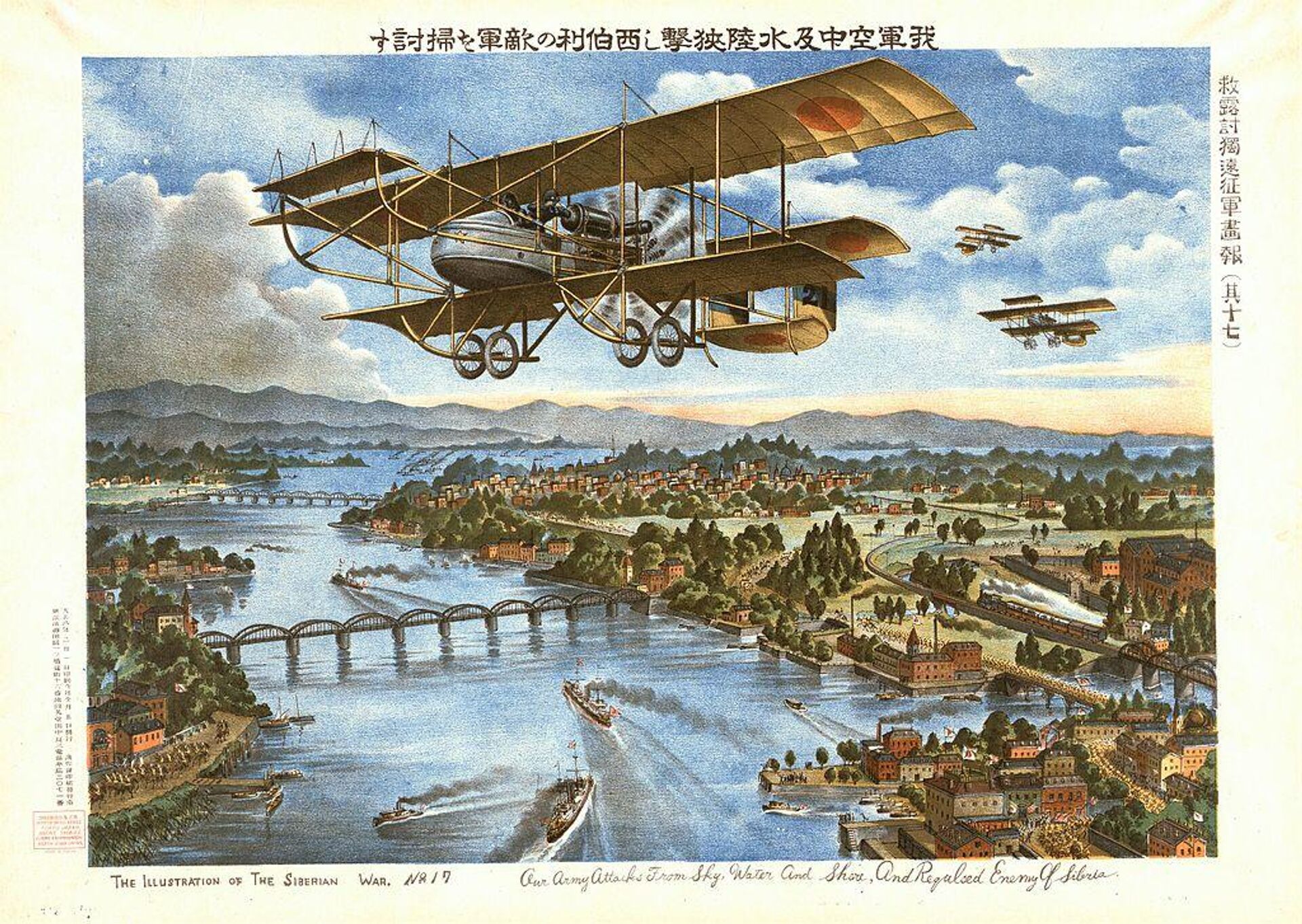
Japanese propaganda poster on the occupation of the Russian Far East.
© Wikipedia / Shobido & Co / US LOC
1935: Fleet Gets Its Current Name
After the conclusion of the Russian Civil War in 1921, the Soviet authorities slowly began work to rebuild the fleet. The Pacific Fleet received its current name in January 1935, when, after witnessing Japanese aggression in Manchuria, the USSR realized that Tokyo might target the Soviet Union next, and began a large-scale military buildup. Moscow could not hope to amass the same kind of naval might as the Japanese (who had the third most powerful navy in the world at the time), and so instead focused on asymmetric warfare, including large numbers of small torpedo boats and subs, backed by coastal defense forces and naval aviation. In addition to the Pacific Fleet, the Soviets formed a North Pacific Flotilla in August 1939 to guard the Tatar Strait separating the Russian mainland from Sakhalin Island.
During the Second World War, the Pacific Fleet took part in operations to ensure the safe passage of US lend-lease aid to the USSR via the Pacific Ocean. Over 147,000 personnel from the fleet were transferred west to join naval units of the Northern Fleet, other naval formations, and ground forces fighting the Nazis and their allies, taking part in the defense of Moscow, Stalingrad, and Sevastopol.
During Operation August Storm in 1945, the Pacific Fleet assisted Red Army assaults in Manchuria and Korea by attacking Japanese forces at bases and ports along Korea’s coasts, and conducting multiple naval landings, most notably the South Sakhalin Operation liberating the southern portion of the island from Japanese troops.
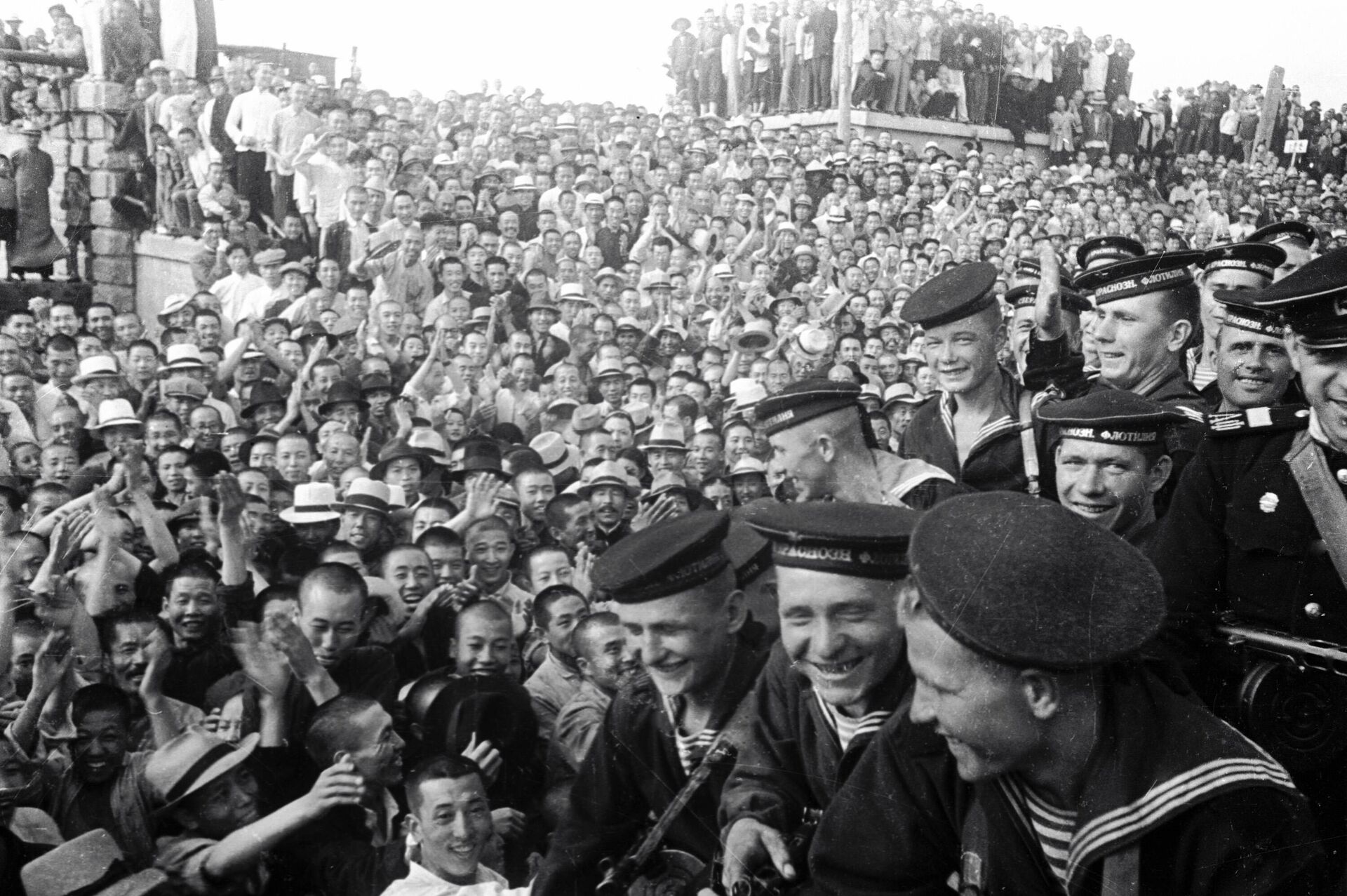
August 1945. Residents of the Japanese-occupied city of Harbin, China greet Soviet Pacific Fleet naval infantry following their liberation.
© Sputnik / Evgeny Haldey
The Pacific Fleet actively took part in the battles of the Cold War, including the Korean War, when it assisted in the delivery of weapons and military equipment to the North Korean Navy. In 1979, the Pacific Fleet established a presence at Cam Ranh Bay, Vietnam, with the facility becoming the USSR’s largest base abroad. During the Cold War, the Pacific Fleet became the largest and most powerful of the four fleets of the Soviet Navy, and – together with the Northern Fleet, was armed with nuclear ballistic missile submarines to serve as the backbone of the nation’s naval-based nuclear deterrent. The fleet conducted operations across the Pacific and Indian Oceans, as well as the Arabian Sea, making its area of responsibility larger than that of the rest of the Soviet Navy combined.
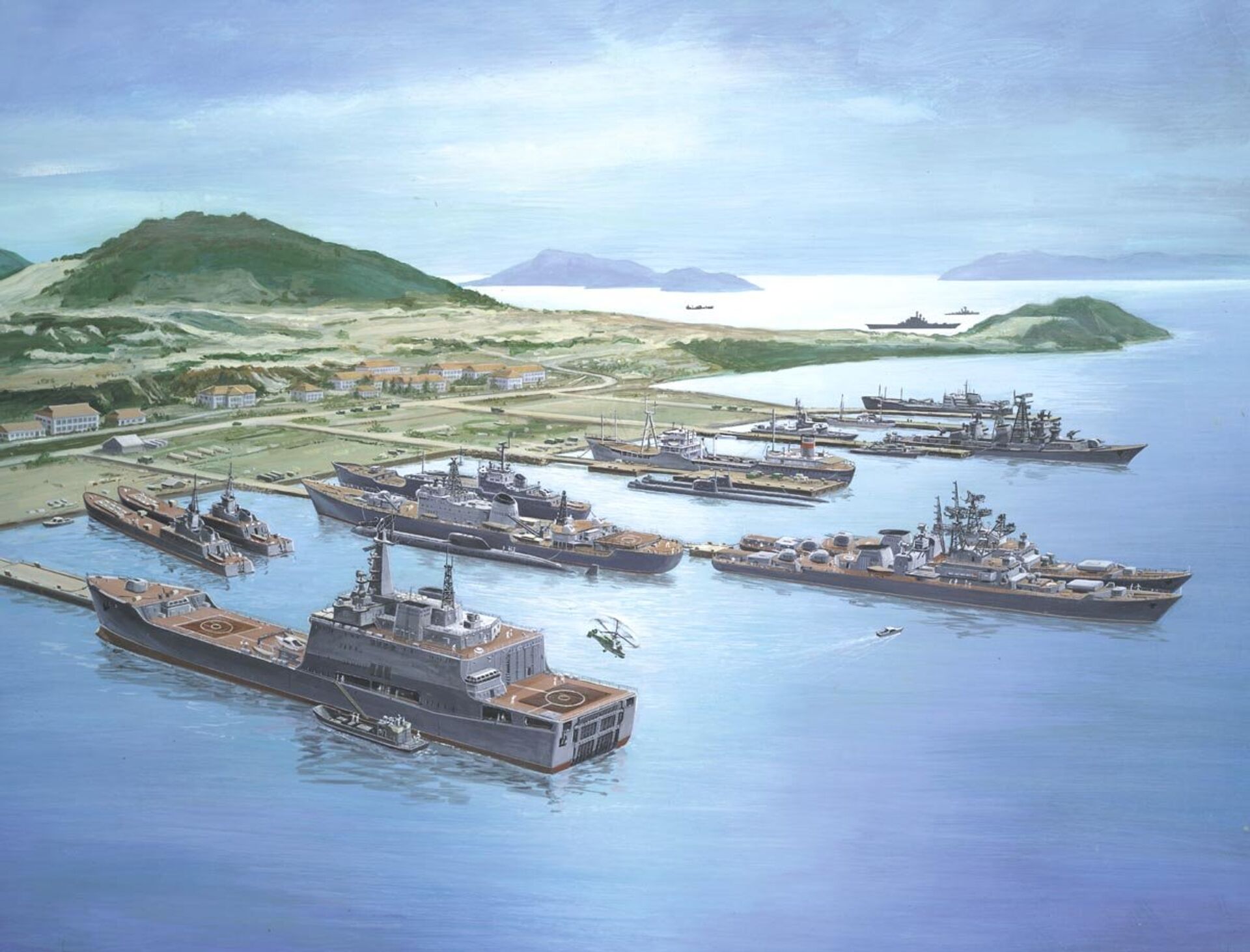
Soviet warships docked at Cam Ranh Bay, Vietnam. Artists rendering for a DIA-published pamphlet known as Soviet Military Power.
Deterioration and Rebirth
The Pacific Fleet was hit hard by the Soviet Union’s collapse in 1991, with its two heavy aircraft-carrying cruisers – the Minsk and the Novorossiysk – sold off and turned into a theme park in China (in the Minsk’s case) and scrapped (in the case of the Novorossiysk). The Orlan-class heavy nuclear missile cruiser Admiral Lazarev suffered a similar fate, as did dozens of other ships large and small. Between the early 1990s and 2003, the fleet did not receive a single new large warship or submarine.
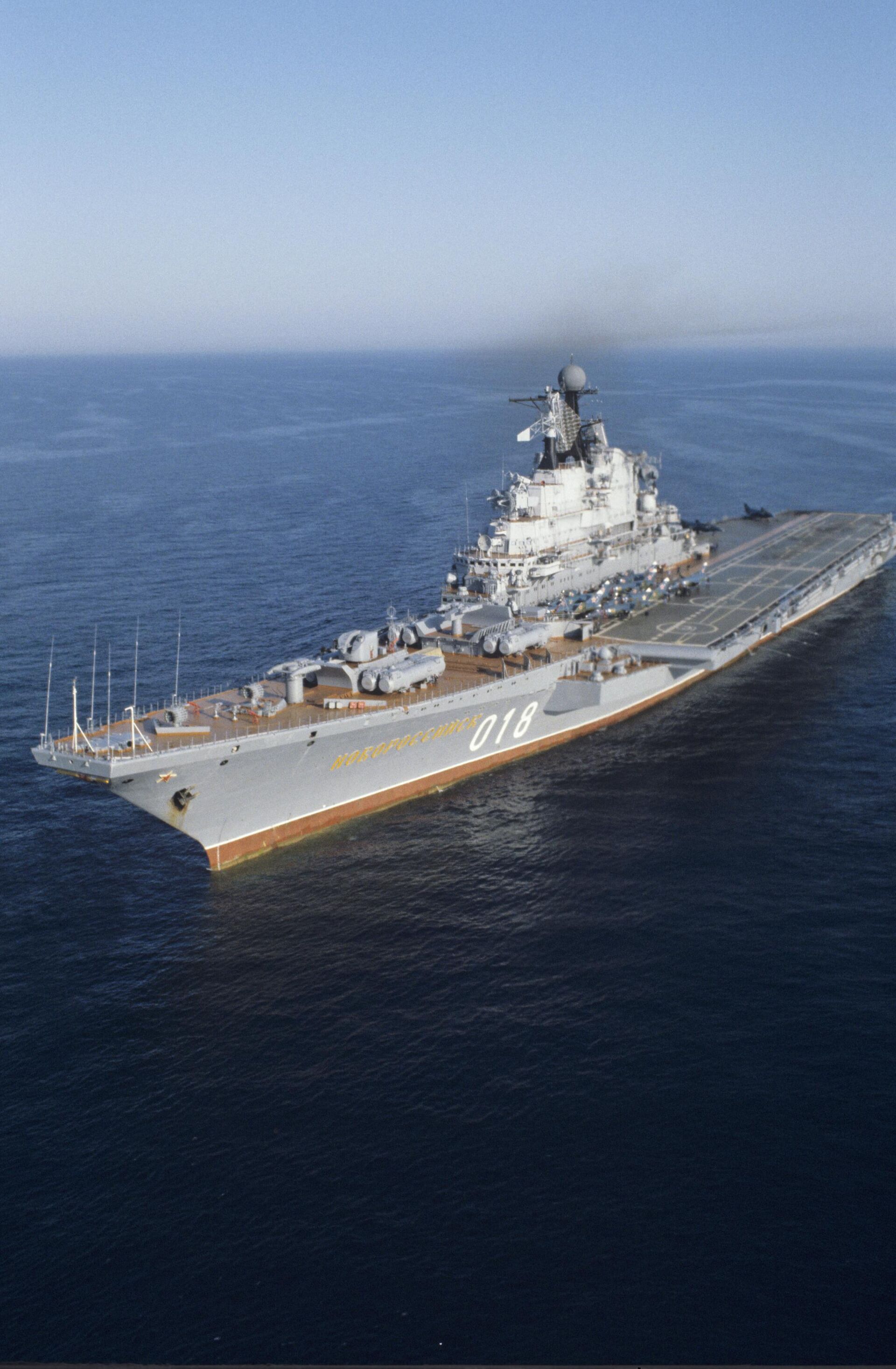
Heavy aircraft-carrying cruiser Novorossiysk of the Soviet Pacific Fleet on maneuvers, 1984.
© Sputnik / Vladimir Rodionov
It wouldn’t be until the late 2000s that major resources began to be invested, with existing ships receiving upgrades and the fleet getting new vessels.
Today, the fleet has 11 major surface warships, including the Project 1164 Atlant Varyag cruiser – which serves as the flagship of the fleet, five destroyers, five corvettes, about twenty anti-submarine warfare and missile corvettes, four large amphibious assault craft, four Borey-class nuclear missile submarines, and about 18 attack and cruise missile subs.
Last month, Russian Navy Commander-in-Chief Admiral Nikolay Evmenov announced that the Pacific Fleet would continue to be rearmed over the coming years with new frigates, corvettes, and nuclear submarines.
“The equipment – the newest ships, submarines and aircraft, has demonstrated high reliability, while its personnel shows its professional skills,” the commander said following snap combat readiness checks in mid-April.
The new vessels expected to join the fleet over the next five years include 12 Project 20380 Steregushchiy and Project 20385 Gremyashchiy-class corvettes, new Project 22800 Karakurt-class small missile ships, and Kalibr and Uran cruise and anti-ship missiles fitted aboard the upgraded Project 11551M Admiral Vinogradov frigate. Two Project 22350 Admiral Gorshkov-class frigates are also currently under construction by Severnaya Verf in St. Petersburg, and are expected to be commissioned in 2026 and 2029, respectively.
The Pacific Fleet’s sub fleet is expected to receive at least one more improved Borey-A nuclear submarine before the end of the current year, and to be equipped with six new Project 636.3 Varshavyanka diesel-electric attack subs by the end of 2024.
Finally, the Pacific Fleet awaits upgrades to its amphibious assault capabilities, with two modified Project 11711 Ivan Gren-class large landing ships expected to be commissioned in 2023 and 2024. These ships will be capable of carrying up to 40 armored vehicles, 400 troops, or between four and five Ka-52K, Ka-27, or Ka-29 helicopters, and up to six Serna-class landing craft.

